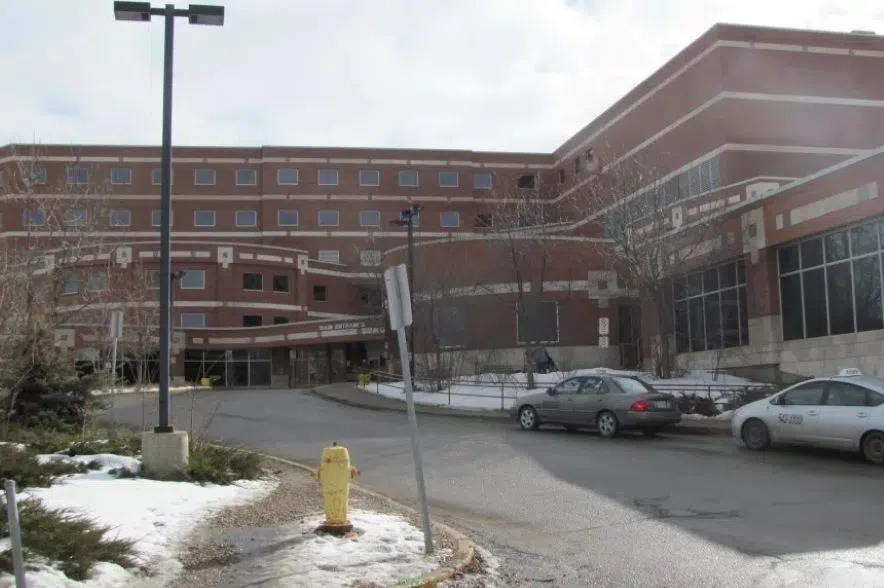Overcrowding at hospitals isn’t just a cause for stress among staff and patients at hospitals, it’s also a fire hazard.
A leaked correspondence from officials of the Saskatchewan Health Authority (SHA) revealed that overcrowding at Regina’s General and Pasqua hospitals have come to the attention of Regina’s fire inspector.
On Wednesday, Saskatchewan NDP MLA Vicki Mowat told reporters the exchange happened on Monday.
The email said the SHA received a “shot across the bow” from the inspector and that its goal was to try to find middle ground with Regina Fire and Protective Services while it searches for space and a potential solution.
Mowat said she was incredibly disappointed for the health-care workers and patients who weren’t able to receive care.
“We’ve been talking for some time about hallway medicine and how it is completely unacceptable that we’re treating people in beds in hallways (or) in waiting rooms because there simply isn’t space in the emergency room and in the rest of the hospital,” Mowat said.
Mowat said the memo highlighted the failure of the provincial government and the need to make change.
She said the email was given to her by a “frustrated” health-care worker.
READ MORE:
- Overcrowding at Saskatoon hospital leads to fire code issues
- ‘Terrible:’ Regina hospital at risk for bypass
- Health authority unveils plan to address crowding at Saskatoon hospitals
Although Mowat said there isn’t a quick fix, she said concerns raised by health-care workers to the province have fallen on deaf ears.
“It starts with talking to the health-care workers. It starts with listening to the frontline workers (and) collaborating with them,” Mowat said.
“In many cases, these folks who are working on the frontlines have the solutions; they have ideas. They need resources in place to make these changes and to be able to provide the care that is available.”
“We have a very alarming trend happening here where concerns aren’t being listened to — patient safety concerns, safety, dignity and privacy of patients,” added Tracy Zambory, the president of the Saskatchewan Union of Nurses.
A similar situation in Saskatoon prompted the province to announce the Saskatoon Capacity Pressure Action Plan (SCPAP).
In an email to 980 CJME, the SHA said it would announce a similar plan for Regina called the Regina Capacity Pressure Action Plan.
“We acknowledge that current hospital capacity pressures may create a difficult environment for patients who are seeking care in our Emergency Departments, and for staff and paramedics who have continued to provide excellent care …,” the email read.
“(The SHA) will release the Regina Capacity Pressure Action Plan (RCPAP), our plan to alleviate and address the immediate pressures facing hospital capacity in Regina, while introducing long-term measures to meet the current and future needs of Saskatchewan residents accessing health care services in the city.”
The email said the RCPAP will build on the “initial success” of the SCPAP. However, earlier Wednesday, Mowat said there wasn’t confidence among health-care workers that the plan was robust enough.
John Ash, the vice-president of Integrated Saskatoon Health for the SHA, weighed in on the matter.
“As an SHA, we do not want to provide care for patients in hallways. We want them to receive care in an appropriate space,” Ash said. “It is definitely a challenging balance with the high numbers of patients that we’ve been seeing accessing our acute care facilities.”
Regina fire chief comments
Regina Fire Chief Layne Jackson told reporters Wednesday that he needs to speak with the fire marshal and inspector to get more information about the situation.
“The concerns that we’ll have with hospitals – and it happens from time to time when they get very busy – is the hallways can get crowded with folks in the hallways and stretchers and other things,” he said. “In a fire, you need to be able to evacuate and move people quickly and that just starts to congest (when patients are in hallways).”
Jackson was also asked about what tools he has to make hospitals clear their hallways.
“Those tools are given to us through the Fire Safety Act (and) through the National Fire Code and that’s what the fire inspector will be utilizing,” he said. “The fire chief doesn’t have to issue all of those, so that’s why I have a fire marshal and fire inspectors out in the field doing that work.”
He said the tools range from issuing a report detailing the deficiencies all the way up to fines and offences.
— With files from 650 CKOM’s Libby Giesbrecht











